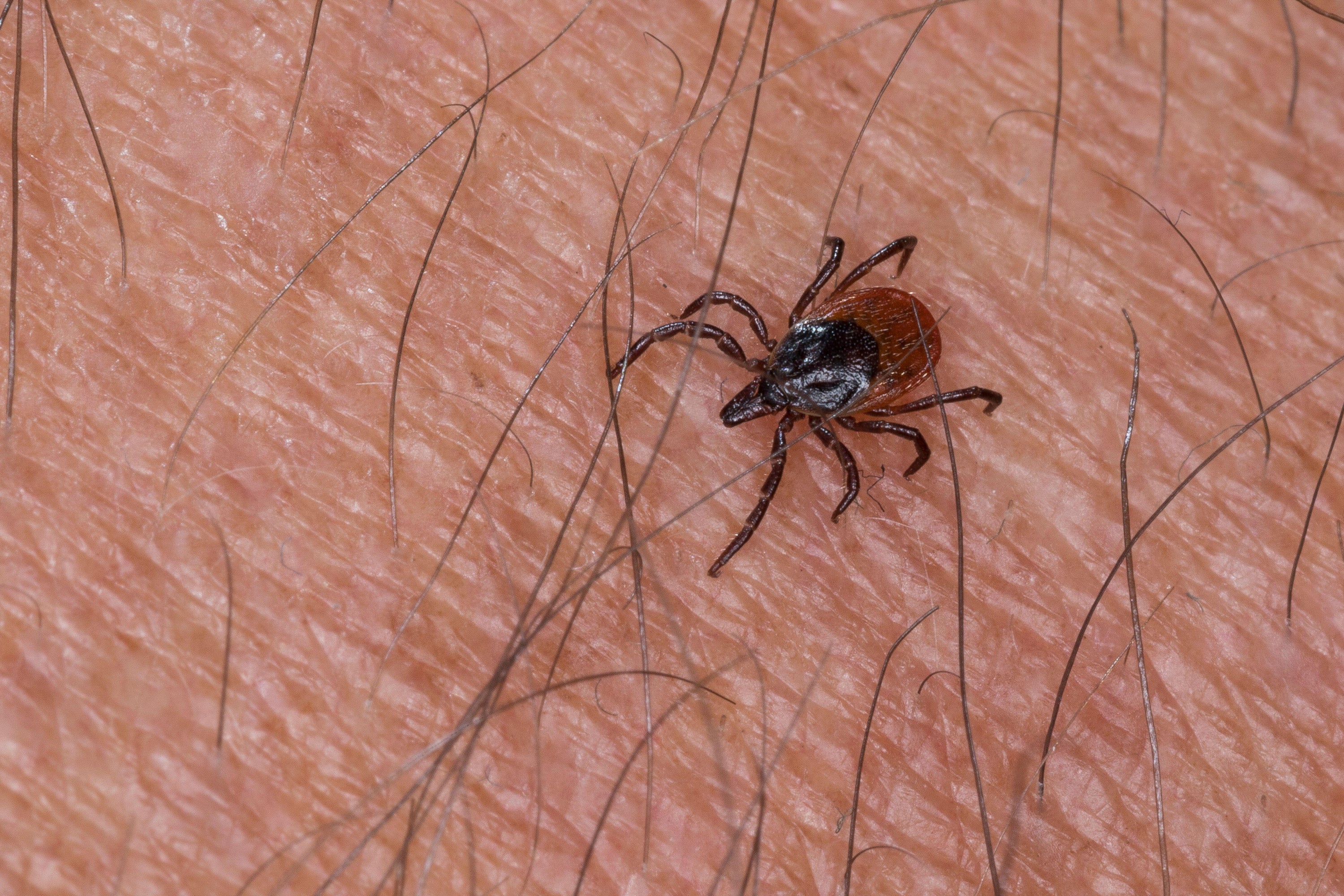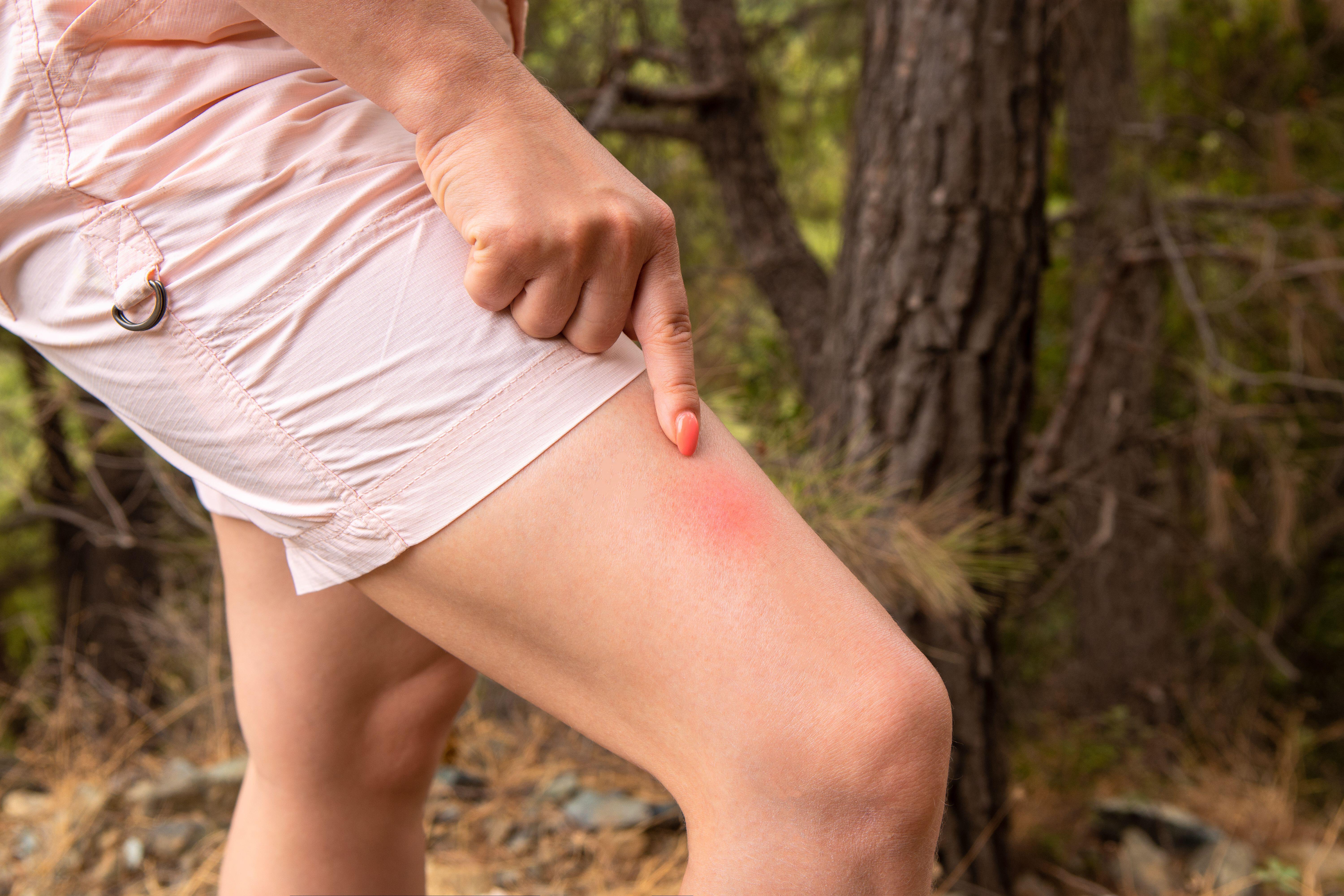What British tourists need to know about the ‘monster tick’ warning – including how to remove them
It’s important to take care and not squeeze or crush the tick if you find one on you

Your support helps us to tell the story
From reproductive rights to climate change to Big Tech, The Independent is on the ground when the story is developing. Whether it's investigating the financials of Elon Musk's pro-Trump PAC or producing our latest documentary, 'The A Word', which shines a light on the American women fighting for reproductive rights, we know how important it is to parse out the facts from the messaging.
At such a critical moment in US history, we need reporters on the ground. Your donation allows us to keep sending journalists to speak to both sides of the story.
The Independent is trusted by Americans across the entire political spectrum. And unlike many other quality news outlets, we choose not to lock Americans out of our reporting and analysis with paywalls. We believe quality journalism should be available to everyone, paid for by those who can afford it.
Your support makes all the difference.Tourists are being warned about “monster ticks” that are spreading across Europe.
Hyalomma lusitanicum, the blood-sucking large ticks from Africa and Southeast Asia, are being carried by wild animals, including rabbits, and can cause dangerous diseases.
They are now reported to be rife across Spain, the Balearic Islands, southern Italy and Turkey. A European Centre for Disease Prevention and Control report found that before 2005, the number of Hyalomma ticks was no more than 5% of the total.
Navin Khosla, a pharmacist at NowPatient, said: “As the summer season approaches, thousands of Brits will be jetting off around the world to enjoy a well-earned break and more importantly, a dose of sunshine.
“But despite all of the benefits travelling abroad brings, there are some downsides, especially when it comes to your health.
“When travelling to different countries, we all need to be more aware of insects and diseases that can pose a risk to our health, such as ticks – a small spider-like creature which is often found in grassy and wooded areas.”
According to Carolina Goncalves, superintendent pharmacist at Pharmica, ticks are small, blood-sucking arachnids closely related to spiders, mites and scorpions.
“They are external parasites that feed on the blood of mammals, birds and sometimes reptiles and amphibians. There are several species of ticks, although the ones that most often bite humans are the black-legged tick, the lone star tick, and the American dog tick,” she said.
“Once a tick finds a suitable host, it attaches itself by cutting into the skin with its mouth parts. It then inserts a feeding tube, often with barbs to anchor itself firmly.
“Ticks secrete saliva that contains anaesthetic properties, making their bites painless. They can feed for several days, swelling as they ingest blood, which temporarily increases their size, making them slightly easier to spot.”
What do tick bites look like?
A tick bite will more often than not go unrecognised, as for most people, you won’t feel one.
“With this in mind, it’s important to regularly check your skin and items of clothing for ticks. If you do notice an oval-shaped rash on your skin, this could be a sign of Lyme disease. It’s important to know that the rash can appear up to three months after the bite, though the rash will usually appear within one to four weeks,” said Khosla.

Goncalves agreed and added: “Adult ticks are approximately 3 to 5mm in length, depending on their age, sex and species, making them difficult to spot.
“They often thrive in humid and wooded areas, grasslands, and areas with thick vegetation. They are commonly found in forests, brushy fields, and along animal trails. Ticks cannot fly or jump. Instead, they climb onto grass blades or leaves and wait for a host to brush past, a behaviour known as ‘questing’. They sense hosts through body heat, moisture and vibrations.
“One way to notice ticks is to wear lighter-coloured clothing so they are easier to spot and brush off.”
What are the symptoms or a tick bite
When bitten by a tick, it is important to remove the tick immediately.
As well as a rash, other common symptoms include a headache, muscle and joint pain, a high temperature and fatigue.
“If you notice yourself starting to experience any of these symptoms, it’s worth speaking to your GP,” said Khosla.
“Lyme disease can be hard to diagnose, so your GP will need to send you for blood tests and if it is confirmed that you have the infection, you will more than likely be prescribed a course of antibiotics.”
Signs of infection could also include redness, swelling or a rash around the bite site, Goncalves said.
“Flu-like symptoms may also occur, such as fever, chills, headache, fatigue, muscle and joint aches or swollen lymph nodes. If you experience any of these symptoms, make sure to visit a doctor at your earliest opportunity, who will likely prescribe antibiotics such as doxycycline or amoxicillin to treat any potential tick-borne infections.”
“Given their small size, tweezers are often used for this purpose. After removing the tick, disinfect the bite area and your hands with rubbing alcohol, an iodine scrub, or, if those are unavailable, soap and water,” said Goncalves.
Khosla also believes it’s important to take care and not squeeze or crush the tick: “Slowly start to pull upwards and dispose of the tick once it has been removed from the skin. Finally, clean the infected area with an antiseptic or soap and water,” he said.
How can you prevent tick bites?
There are several ways to protect yourself from tick bites and avoid the need for medical intervention.

“Firstly, consider clothing choices that can protect against ticks, such as long-sleeved shirts and long trousers. It can also help to tuck your trousers into your socks, as this creates a barrier that prevents ticks from reaching your skin,” said Goncalves.
“Ticks typically climb upwards from ground-level vegetation, so by tucking your trousers into your socks, you reduce the chances of ticks accessing exposed skin.
“For added protection, consider using a tick repellent containing chemicals such as N-Diethyl-meta-toluamide (DEET) and picaridin.
“DEET disrupts certain neurons and receptors in the antennae of ticks, preventing them from biting the skin. Picaridin, on the other hand, is thought to block the smell and taste receptors of ticks, making it difficult for them to detect human odours and therefore reducing the probability of ticks attaching to the skin and leaving bites.”
Join our commenting forum
Join thought-provoking conversations, follow other Independent readers and see their replies
Comments